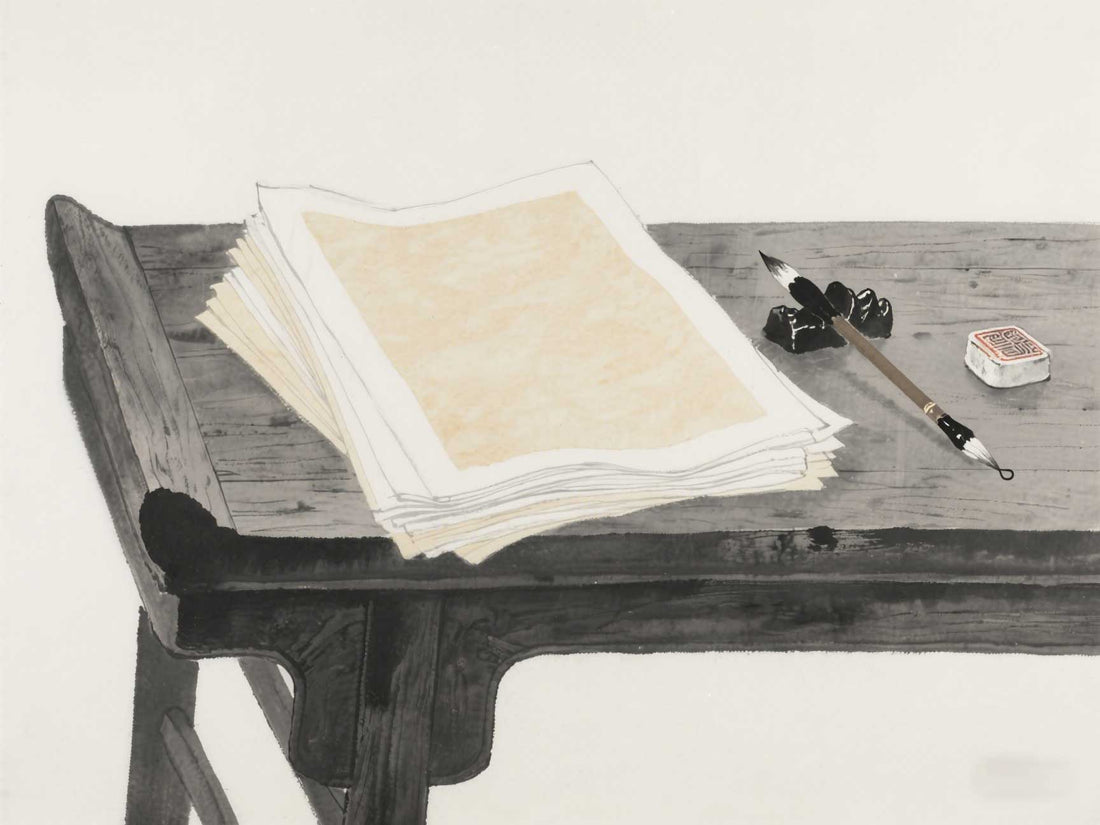
How to choose the right calligraphy paper for calligraphy practitioners
Share
As a calligraphy enthusiast, choosing practice paper requires comprehensive consideration based on calligraphy type, personal level, budget, and requirements for paper properties. Here are some key recommendations:
1. Choose paper characteristics according to calligraphy type
- Regular Script/Lishu Script : Suitable for writing on slightly rough paper with medium ink absorption (such as rough-edged paper or semi-raw rice paper) to facilitate showing the details of the strokes.
- Running Script/Cursive Script : Give priority to paper with a smooth surface and slow ink absorption (such as semi-cooked rice paper or machine-made rough-edged paper) to ensure smooth pen movement.
- Seal script or large-character works : Use paper with strong ink absorption and good toughness (such as rice paper or thick handmade paper) to prevent the ink from spreading out of control.
2. Common types of practice papers and their applicable scenarios
| Paper type | Features | Target Group | Pros and Cons |
| Rough paper | Machine-made paper, slightly rough surface, low price | Beginners, daily practice | ✔️Affordable and suitable for a lot of practice; ❌The texture is thin and easy to break. |
| Half-cooked Xuan | Handmade or semi-handmade, moderate ink absorption | Advanced practice, small works creation | ✔️Rich ink levels; ❌The price is relatively high. |
| Yuanshu Paper | Made of bamboo pulp, flexible and ink-absorbing | Practice of seal script, official script and regular script | ✔️It feels simple and antique; ❌Need to adapt to paper texture. |
| Handmade hemp paper | Rough fiber, natural texture | Pursuing a taste of metal or a special style | ✔️Strong artistic quality; ❌High price and requires skills to drive |
3. Purchase tips and precautions
- Initial practice : Choose machine-made rough-edged paper to reduce the cost of trial and error.
- Advanced stage : Try semi-cooked Xuan paper from different origins (such as Anhui Xuan paper and Sichuan Jiajiang Xuan paper) and feel the changes in ink color.
- Online shopping test : first purchase a small sample (single sheet or a pack of 10 sheets) to test whether the paper absorbs ink and has good ink support.
-
Mistakes to avoid :
- Xuan paper (which absorbs ink very quickly) requires strong pen control ability, so beginners should use it with caution;
- Paper that is too thin will easily let ink seep through, making the back side difficult to use.
4. Paper testing method
- Water drop test : drop a drop of water on the back of the paper. If it spreads quickly, it is raw rice paper; if it spreads slowly, it is semi-raw rice paper; if it does not spread, it is cooked rice paper.
- Try writing and observe : Use common pen and ink to write the word "永", and check whether the stroke edges are clear and the ink color is even.
- Toughness test : Gently rub the corners of the paper. High-quality paper fibers are tight and not easy to break.
5. Other practical suggestions
- Budget allocation : Initially, 70% of the budget is used for paper, 20% for ink, and 10% for pens (this can be adjusted after becoming proficient).
- Utilization of scraps : The cut paper scraps can be used for word practice to reduce waste.
- Storage method : Paper needs to be kept moisture-proof (sealed bag + desiccant) to avoid mold or brittleness.
Summarize
Start with machine-made rough paper, gradually transition to handmade semi-raw rice paper, and adjust according to personal style. You don't have to pursue expensive paper, but you should avoid using completely unsuitable paper (such as printing paper) that affects the feel. Through repeated attempts, I finally found the " birth paper " that suits my own brushwork and ink techniques.
